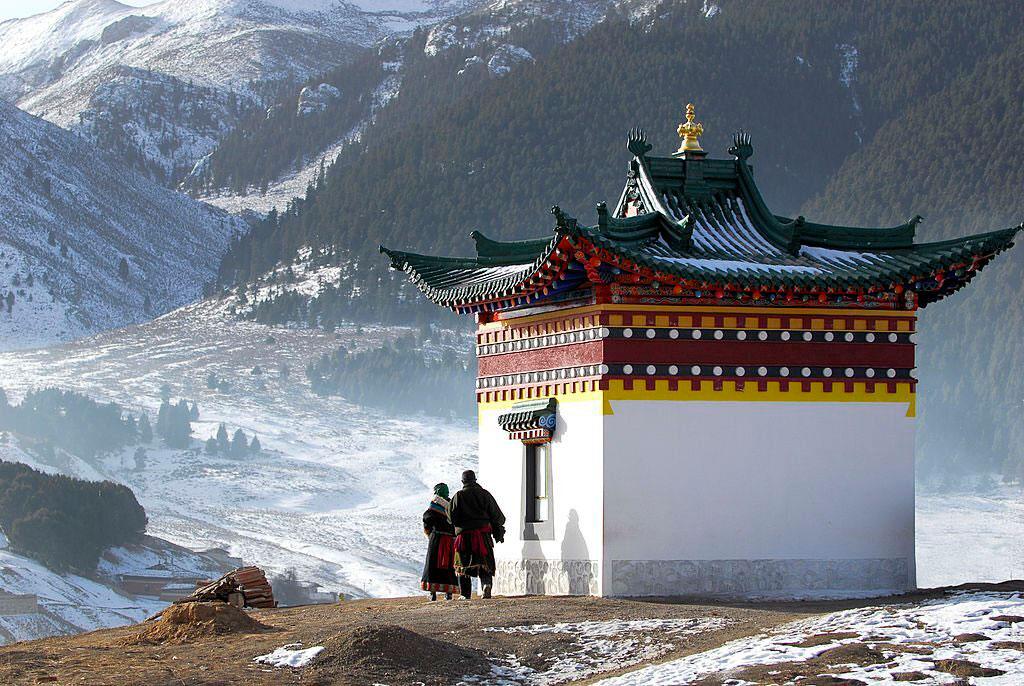
Below Listing Must See Spots in Qinghai.
Hall of Guanyin of the South Sea
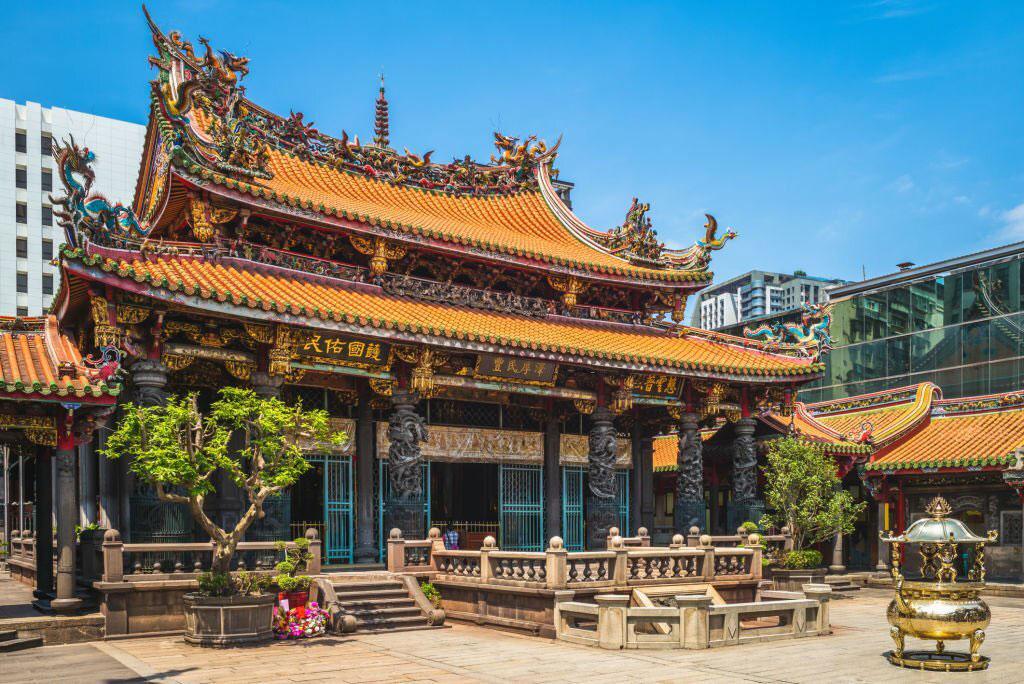
The Hall of Guanyin of the South Sea is located at the foot of Meici Mountain south of the county seat of Guide. The hall, which perches on the mountain, was built in the Ming Dynasty (1368-1644). Its major structures are the front gate, an archway, the Crescent Pond, the Nether World, the Hall of Guanyin, the Wenfeng Pavilion, the Luzu Hall and the Sanqing Palace.
Standing in the Wenfeng Pacilion, you can have a full view of Guide.
Transport: Take a bus from the Xining Long-distance Bus Station to Guide County.
Yuhuangge Building Complex
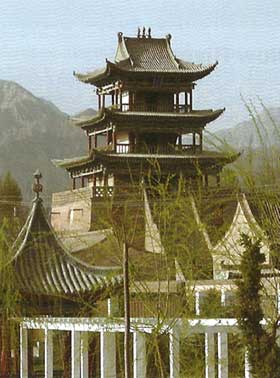
Yuhuangge Building Complex
The Yuhuangge Building Complex is located north of Heyin Town, the county seat of Guide, 110 kilometers from downtown Xining. Construction of the building complex began in 1592 during the Ming Dynasty. It is now a historical site under the protection of the Central Government. On its premises are the Confucian Temple, Lord Guan Yu’s Temple and the Wanshou Taoist Temple, also known as Yuhuangge, or the Pavilion of the Jade Emperor.
Tablet inscriptions and murals in this large building complex are all valuable cultural relics under the protection of the provincial government. A Chinese couplet reads: “The Yellow River surges on the northern side of Yuhuangge; the towering Yuhuangge rises up to the clouds.” With its neat layout, the ancient building complex is a symbol of equality, interdependence and the unity of Confucianism, Taoism and polytheism.
Transport: Take a bus from the Xining Long distance Bus Station to Guide County.
Former Residence of the 10th Panchen Lama
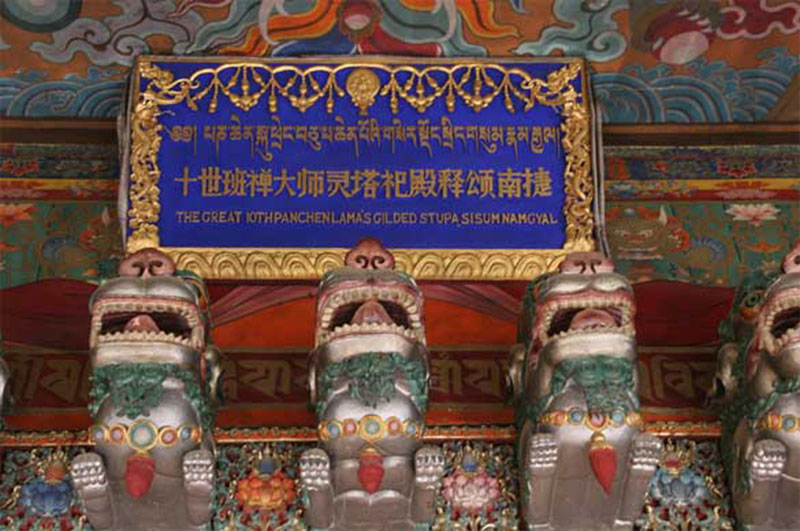
The residence is located in Mari Villaqe, Wendu Town, Xunhua County. It is the birthplace of the 10th Panchen Lama, Choe kyi Gyaltsen, who was born here on Febru ary 3,1938.
The residence is a building in the Tibetan architectural style. A horizontal inscription board hung above the door of the scripture-chanting hall was a gift from the Han people residing in the
county to celebrate the completion of the residence in October 1983. The board is inscribed with four Chinese characters, meaning “the origin of the river”. It is flanked by a couplet lauding
the great Buddhist master’s love of the country and Buddhism.
Transport:Take a long-distance bus from Xining to Linxiaor Hezuo, and et off at Xunhua County.
Atomic Town
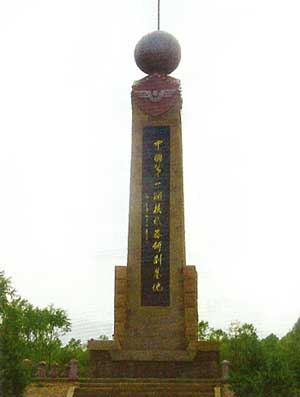
Monument at the Atomic Town
The Atomic Town is located in Xihai Town, Haiyan County, Haibei Prefecture, 120 kilometers from the urban area of Xining. It is the place where Chinese scientists developed China’s first atomic bomb and hydrogen bomb during the 1960s and became the first defunct nuclear weapons base in the world in July 1993. Shortly afterward, the government of Haibei Prefecture moved its office here and renamed it Haibei Town.
The former mysterious nuclear base was opened to the public and became a tourist attraction integrating patriotism education base with grassland views and explorations of the Atomic Town. The exhibition center at the nuclear base has seven exhibition rooms, recapping the development of the base with a large collection of vivid pictures.
Zhacang Hot Springs Spa
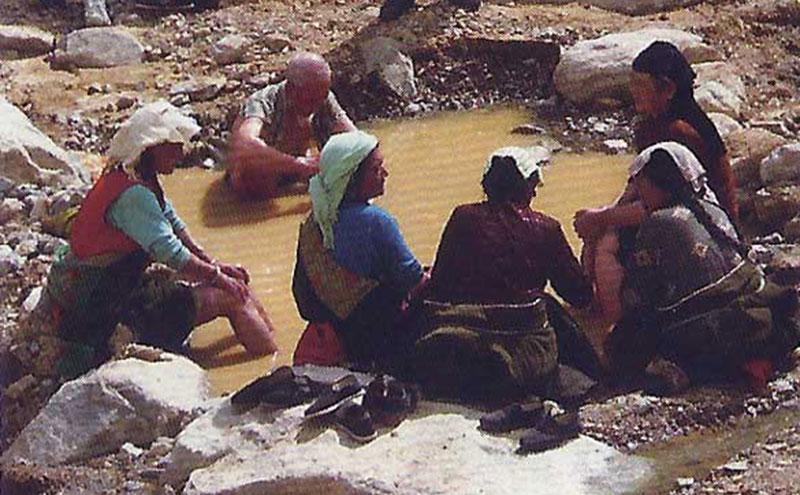
The spa in Guide County, 125 kilome ters from downtown Xining, covers an area of 1,800 square meters. The water temperature of its 27 springs is as high 93 degrees Celsius. The spring water, rich in silicic acid, metaboric acid, fluorine, lithium, strontium, radium and other microelements, is of con siderable medical value. People have been taking baths in the spring water to treat dis eases since the early Ming Dynasty more than 600 years ago.
Transport: The spa is 10 kilometers from the county seat of Guide.One can get there by bus from the Xining Long-distance Bus Station to Guide County.
Jinyintan Grassland
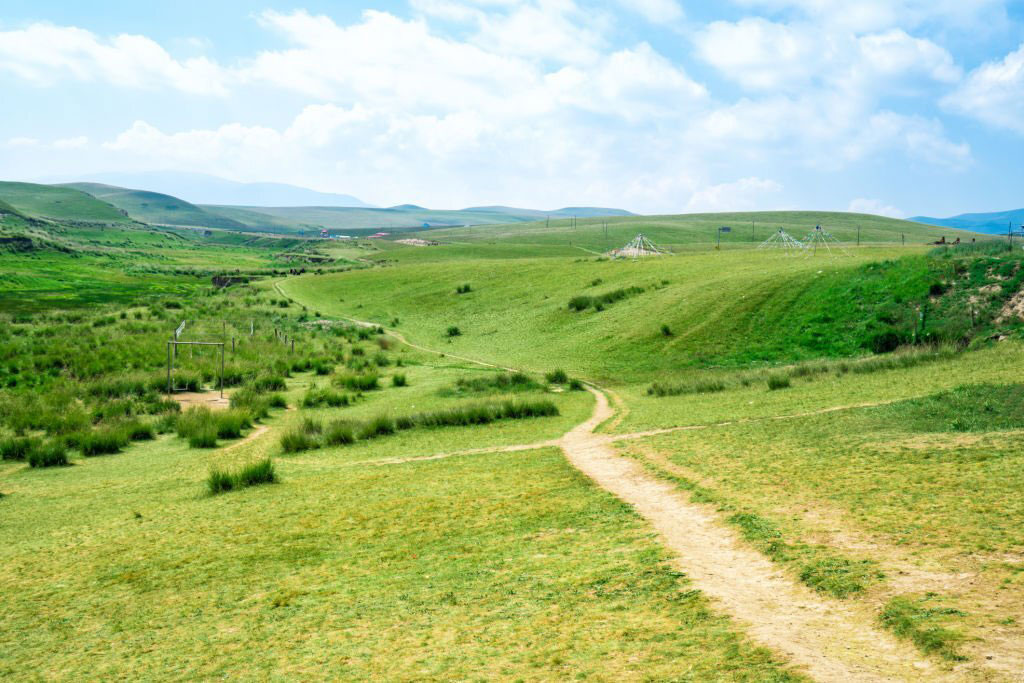
The Jinyintan Grassland lies 5 kilometers west of Xihai Town, Haiyan County, Haibei Tibetan Autonomous Prefecture. It consists of the Jintan Grassland and the Yintan Grassland, with the Mapi River and the Halijin River running across them.
The grassland on the northern shore is called Jintan, or Golden Beach, because a kind of plum flower in golden color grows there.
The grassland on the southern shore is called Yintan, or Silver Beach, because another kind of plum flower in silvery color grows there.
Wang Luobin, a noted folk singer from West China, gained worldwide acclaim for his song In the Place Faraway, which depicts the mysterious, picturesque Jinyintan Grassland.
Transport:Take a bus from the Xining Long-distance Bus Station to Xihai Town, Haiyan County, or take a bus from Qinghai Lake to the Jinyintan Grassland.
Qilisi Scenic Zone a quiet room with ample therapeutic tonics
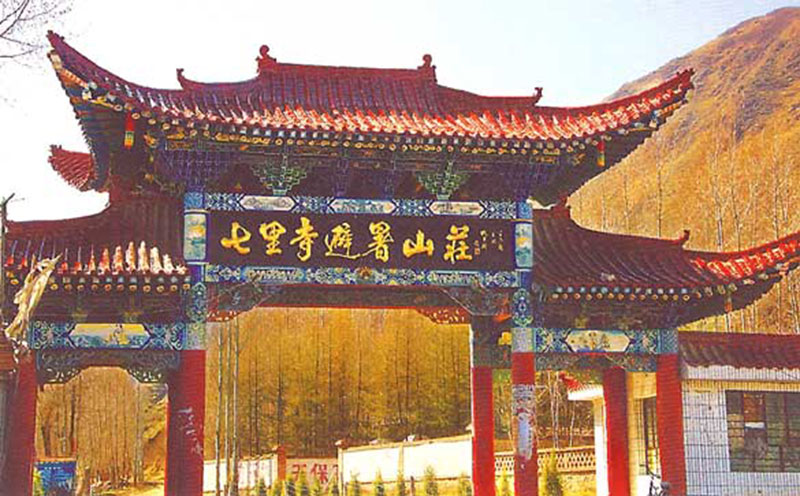
The scenic area is situated at the foot of Xiaojishi Mountain, in Gushan Town, south of Minhe County town, 160 kilometers from downtown Xining. In the Tibetan languge, Oilisi means a quiet room with ample therapeutic tonics.
The Qilisi Gorge is 3,200 meters above the sea level and covers an area of 53 square kilometers. The scenic zone grows many valuable medicinal herbs, and also boasts plenty of wild birds. Beneath the rocks on the river banks are 11 springs of different sizes, whose water has therapeutic value. After repeated tests, experts have found the water of an age-old spring in the northern end contains more than 40 trace elements that have remarkable healing effects on gastrointestinal diseases, cardiovascular diseases and skin diseases.
Transport: Take a long-distance bus from Xining to Zhangye or to Jishi Mountain, and then get off in Minhe County.
Lajia Ruins the “Pompeii in the East”
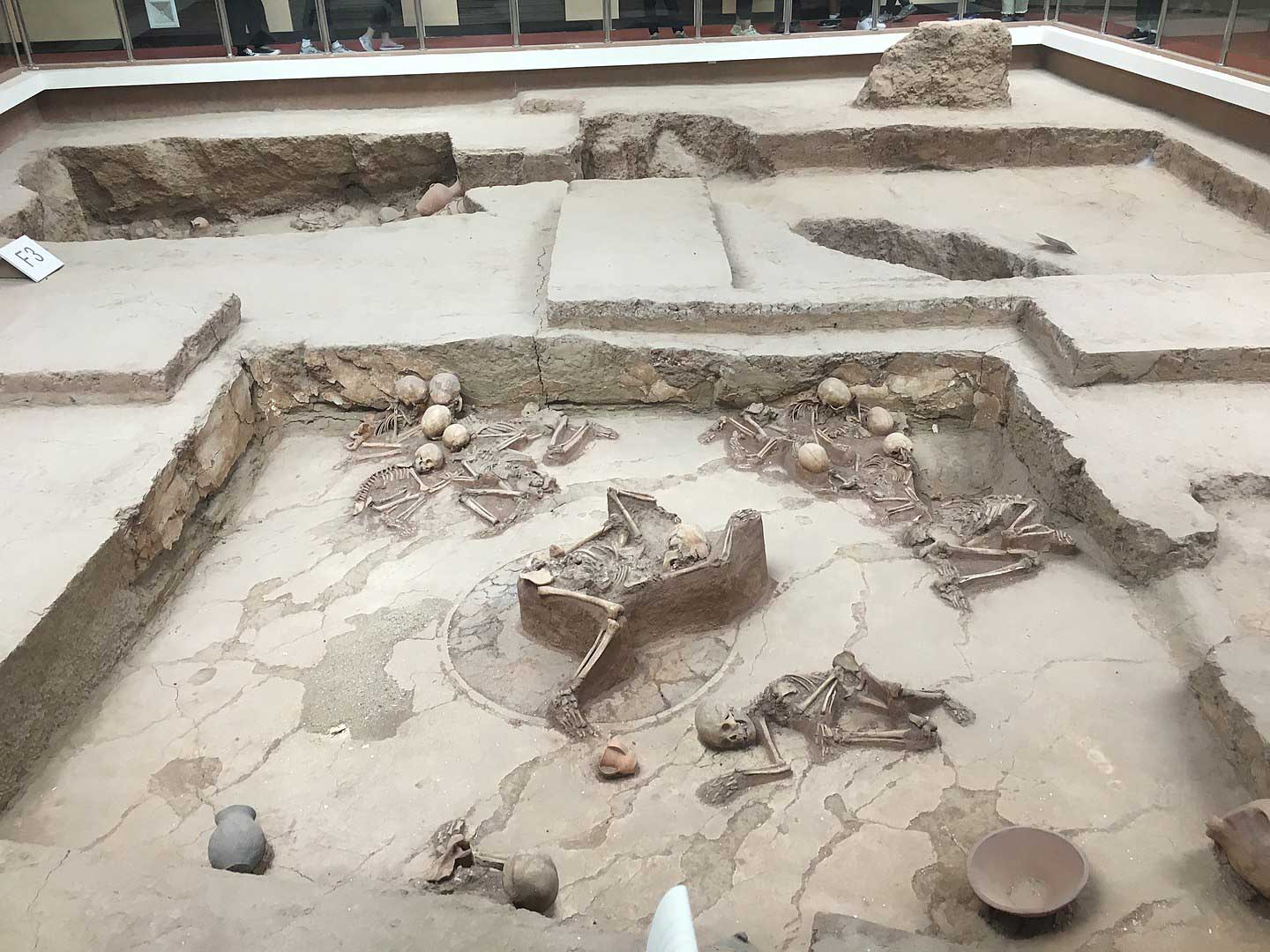
The site of the Lajia Ruins is located in Lajia Village, Guangting Town of Minhe County, 120 kilometers from downtown Xining. The key historical site under national protection displays ruins from prehistoric disasters. It is known as “Pompeii in the East.” There are also programs to display local cultural and folk customs. Quite a few ruins date back to prehistoric periods and the Bronze Age, such as the ruins of the Miaodigou Period, the Majiayao Culture, Qijia Culture and Xindian Culture, with the ruins of the Qijia Culture surpassing those of other cultures both in number and size.
Some 4,000-year-old noodles made with millet found in the Lajia Ruins are still in good shape. These are most ancient noodles ever found up to now.
Transport:Take a lonq-distance bus from Xining to Zhangye or to Jishi Mountain, and then get off at Minhe County.
- Tourist Information (Round-Xining Tour)
- Transportation P95 Catering PI07
- Hotels PI09 Shopping PII3
- Entertainment PI22 Travel Services PI22
Hope you enjoyed reading about “Must See Spots in Qinghai”. Please do share your thought in the comment section below.